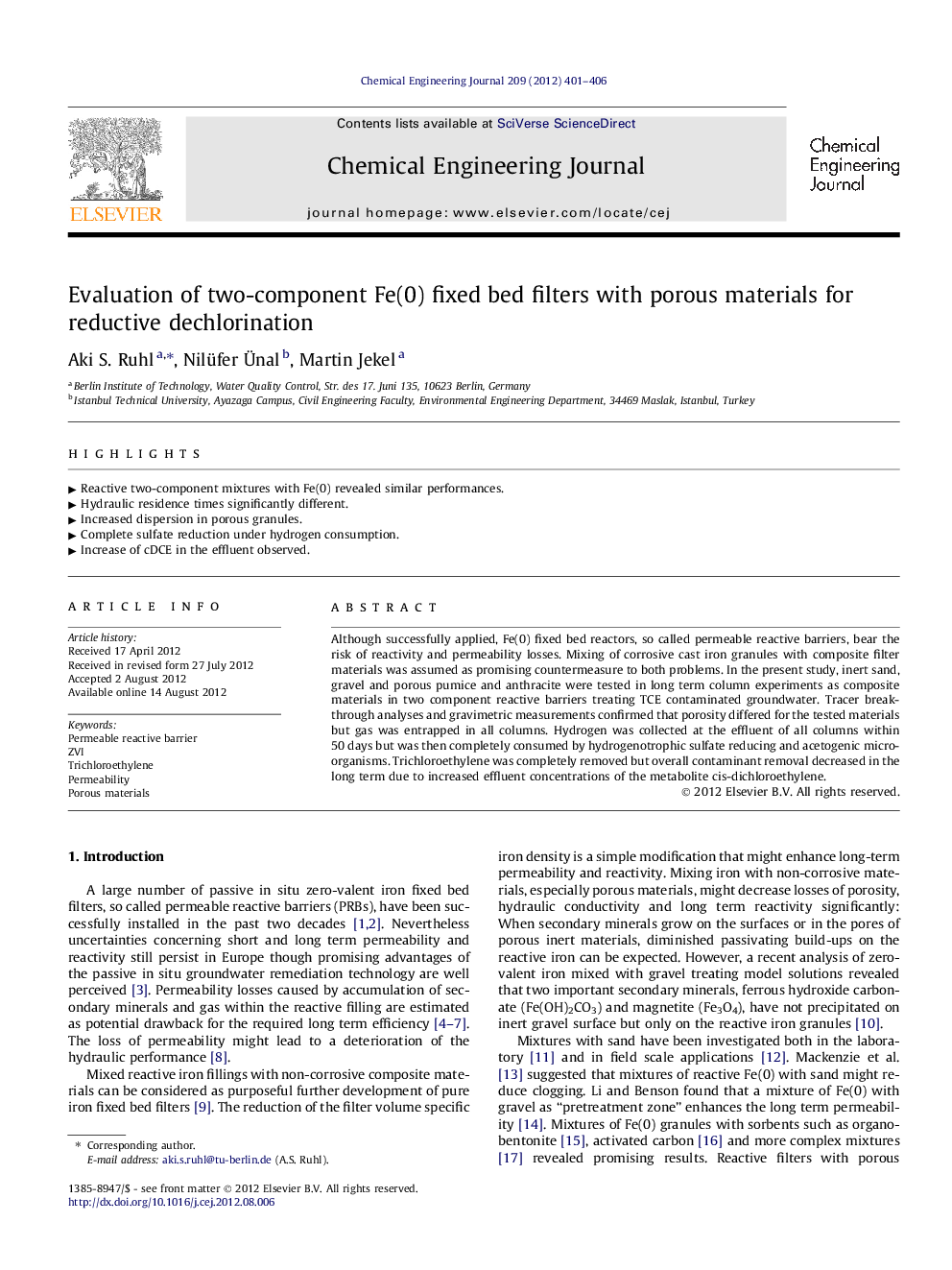| Article ID | Journal | Published Year | Pages | File Type |
|---|---|---|---|---|
| 149217 | Chemical Engineering Journal | 2012 | 6 Pages |
Although successfully applied, Fe(0) fixed bed reactors, so called permeable reactive barriers, bear the risk of reactivity and permeability losses. Mixing of corrosive cast iron granules with composite filter materials was assumed as promising countermeasure to both problems. In the present study, inert sand, gravel and porous pumice and anthracite were tested in long term column experiments as composite materials in two component reactive barriers treating TCE contaminated groundwater. Tracer breakthrough analyses and gravimetric measurements confirmed that porosity differed for the tested materials but gas was entrapped in all columns. Hydrogen was collected at the effluent of all columns within 50 days but was then completely consumed by hydrogenotrophic sulfate reducing and acetogenic microorganisms. Trichloroethylene was completely removed but overall contaminant removal decreased in the long term due to increased effluent concentrations of the metabolite cis-dichloroethylene.
► Reactive two-component mixtures with Fe(0) revealed similar performances. ► Hydraulic residence times significantly different. ► Increased dispersion in porous granules. ► Complete sulfate reduction under hydrogen consumption. ► Increase of cDCE in the effluent observed.
